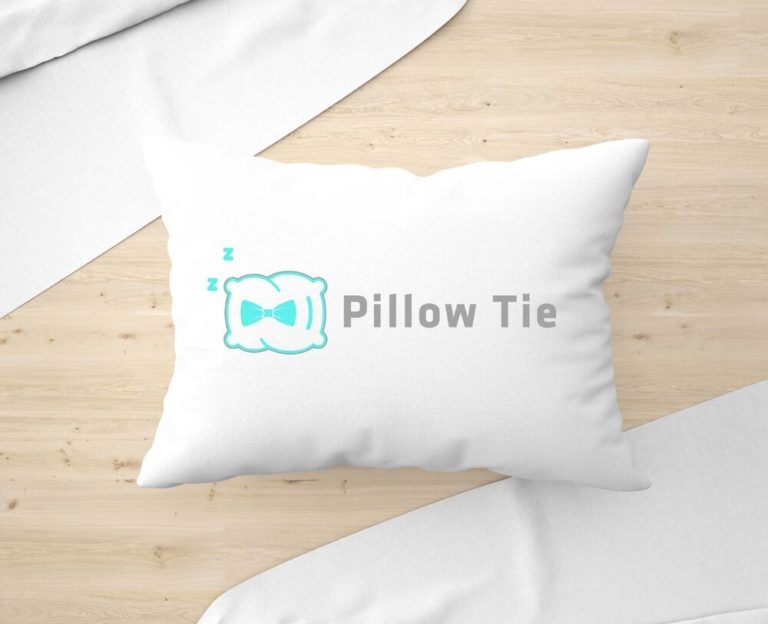You might think — they’re just pillows, what’s the point of being so picky about it? Well, trust me on this, not having the right kind of sleeping pillow can disrupt your daily living style significantly.
One of the main issues with buying pillows is that the return policy is not as generous as other products such as mattresses, and we may end up buying the cheapest option for fear of wasting our money.
Pillow materials vary from synthetic fillings to natural fillings. People are starting to opt for Buckwheat pillows as they are organic and work well with other pillow materials.
Following thorough research, we have come up with the pillow buying essential guide for you. Time for you to enhance your pillow knowledge!
Common Pillow Size Measurement Table
| Pillow Size | Measurements (CM) | Measurements (Inches) |
| Standard | 51 CM by 56 CM | 20 inches by 26 inches |
| Queen | 51 CM by 76 CM | 20 inches by 30 inches |
| King | 51 CM by 92 CM | 20 inches by 36 inches |
| Body | 51 CM by 137 CM | 20 inches by 54 inches |
Factors to Consider While Buying a Sleeping Pillow
We have pinpointed a few key factors that you really need to keep in mind while buying something as important as a sleeping pillow. Go through them to learn more about pillow shopping!

1. Sleeping Position
The first and most important point while picking any sort of pillow is your sleeping position. Even though doctors suggest you sleep in a neutral and comfortable neck position, not everyone can follow them. Some people prefer back sleeping, some like side sleeping, while some are stomach sleepers.
Truth be told, sleeping position is all about your comfort, so we will not interfere with that.
Instead, we’ll suggest different types of pillows for different sleeping styles. To give optimum support to your head and neck, you should choose a pillow that’s neither too high nor too low since it might hamper your sleep.
Now, if you’re a back sleeper, you need a relatively flat pillow, at least flatter than the side sleeper pillows. Then again, if you’re a stomach sleeper, you’ll require a thin pillow so that the neck isn’t pushed up high while sleeping.
To sum it up, you need to provide maximum support to your spine and neck, so try to stay at a neutral angle while sleeping and choose the pillow accordingly.

2. Loft
Loft refers to the height/thickness of the pillow. It’s very important in order to achieve support and comfort for the user.
A pillow with too thick or too thin loft may result in discomfort, pain, and various breathing difficulties like snoring.
Apart from that, an uneven pressure put to the head and bad neck alignment can result in various complications.
The best loft for you will also be affected by factors as well. For example, mattress firmness will determine how much the pillow ‘sinks’ into the bed, thus lowering the overall pillow height.
Sleeping position affects this as well due to the difference in weight put on the pillow. Another factor could be your head size or weight.
Again, this will affect how much the pillow is being compressed when you lay down on them.
If you’re sleeping on your stomach, your arms are usually on the pillow, adding weight and compressing the pillow further.
If you’ve noticed, brand new pillows often feel fluffier and more comfortable than ones that are a few years old.
This is due to the pillow filling that degrades and compresses over time, losing the original loft and height.
3. Firmness
This is another important aspect of a proper pillow that you must check properly. Yes, the pillow’s label might say it’s ‘very firm,’ but the labels say many things; not all of them turn out to be true.
So be sure to check the pillow physically, if possible, to determine if the firmness suits you.

4. Mattress Density
Even though we’re discussing pillows, it’s absolutely necessary to know your mattress type and pick a pillow accordingly.
For example, if you have a very firm mattress, in that case, you’d require a fuller pillow.
On the other hand, if you have a relatively softer mattress, your pillow should be thinner.
The reason behind picking a fuller pillow for a firmer mattress is that while softer mattresses allow your body to sink in, firmer ones won’t.
This will leave a large gap between your neck and your mattress, and a fuller pillow will assist you with that.
5. Comfort and Breathability
Last but not least, what’s a pillow that doesn’t provide you with maximum comfort? Interestingly enough, soft or flexible pillows aren’t always the perfect fit for many.
Many people get really sweaty while sleeping, so they require a breathable pillow that can easily dissipate heat to give the user a calm, comfortable sleep.
If you have such issues, you can go for pillows made from shredded foam or polyester, as they generally stay cooler than other solid foam-based pillows.

What Are The Common Pillow Fillings?
While memory foam and polyester are two common filling materials, a few other pillow fillings are gaining popularity. We’ll talk about all of them, and you can pick one for yourself.
1. Polyester Pillow

Polyester is cheaper than cotton and all the other naturally found fibers. So, polyester pillows are usually a good budget option. They’re inexpensive, and they kind of look like cotton.
They come in all shapes and sizes. One main benefit of polyester filling is its hypoallergenic properties.
Polyester fillings are breathable but don’t hold onto their shape, thereby ruining the outer aesthetics of the pillow easily.
- Budget-friendly
- Easy to find
- Hypoallergenic
- Loses shape quickly due to short lifespan
2. Memory Foam Pillow

Memory foam is designed to fit and adapt according to the structure against it. So, these pillows mold into each person that uses them, making them ergonomic.
These pillows are also good for improving spinal alignment. The pillows are stiff and so prevent motion transfer.
However, these fillings aren’t very breathable. Petroleum-based chemicals used in the manufacturing of memory foam may result in off-gassing.
- Firm support
- Promotes healthy spinal alignment
- Relief pressure points
- Off-gassing
3. Shredded Memory Foam Pillow

The memory foam pillow is usually quite stiff. A shredded memory foam pillow, on the other hand, can be easily molded.
It is more breathable than a traditional memory foam pillow. So, it is more suitable for a warmer climate.
The downside of having a shredded memory foam pillow is that it can feel inconsistent in height, as it negates some of the firm support offered by memory foam pillows.
- Distributes and supports weight evenly
- Moldable in shape
- Good airflow
- Less support compared to traditional memory foam
4. Feather/Down Pillow

Feather filling allows them to adjust to the shape of the neck and head. However, it is not as firm, for example, as a latex pillow.
Feather pillows are a good option for colder climates. The reason for this is that feathers insulate air and would keep your head and neck warm.
Feather pillows are soft and generally considered to be a luxury. These pillows are well-suited for all sleeping positions.
An average lifespan of a feather pillow is two to three years. So, these are also very durable.
However, they get flattened down easily, and unlike polyester pillows, feather pillows are not suitable for people with allergies.
- Plush feel
- Good for colder climate
- Durable
- Not suitable for people with allergies
5. Latex Pillow

One of the best things about latex pillows is that they are very durable.
Some people may not like latex pillows. Initially, they can have a rubber-type odor. Although the smell eliminates in a few days, it can still be off-putting for some.
Latex pillows also have a chemical springiness that some people may not like.
- Soft to touch
- Provides good support
- Durable
- Lingering rubber type odor
6. Buckwheat Pillow

This is a unique filling, as it consists of small, dry seeds that are comforting to your head and neck. These pillows have a firm surface that easily contours to the shape of the head.
Most buckwheat pillows offer the flexibility to add or remove hulls as per the sleeper’s preference.
Buckwheat pillows are durable and breathable. So, they are suitable for warm climates. Buckwheat is also known to have hypoallergenic and cooling properties.
While they’re quite comfortable, the seeds often rustle when you move, and not everyone likes the sound of it.
- Eco-friendly, natural alternative
- Firm support
- Hypoallergenic
- Can be noisy
7. Water Pillow

Water pillow contours to head and neck shape. As you move, this pillow will instantly adjust to the shape of your head.
You can change the water inside the pillow as per your preference.
Since the pillow is full of water, it tends to be heavy. These pillows can weigh up to 15 pounds which can make it difficult to move them.
Be sure to fill the water following instructions, as any air stuck in the bladder can lead to noise during usage.
- Helps with back and neck pain
- Supports weight evenly
- Easy to adjust pillow height
- Can be heavy
8. Microbead Pillow

The pillow is moldable and offers support. It has the same benefits as a shredded memory foam pillow.
The Microbead pillow is breathable and remains cool. It retains less heat as compared to a shredded memory foam pillow. So, you get some of the benefits of shredded memory foam pillows while staying cool.
Microbeads have been under a lot of controversies lately due to the environmental impact of the material.
The beads degrade very slowly. So, if you are environmentally conscious, you might want to consider the other options.
- Breathable while being moldable
- Provides good support
- Durable
- Degrades slowly
9. Gel Pillow

Gel pillows can come combined with other pillow fillings, such as memory foam and shredded memory foam.
The pillows are extremely good at drawing heat. The pillow also offers enhanced support. The pillows are also moldable since they are filled with gel.
The pillows have a gel-like feel. However, some people may not like this feel. These pillows might not be very effective in reducing heat at scorching temperatures.
- Cooling effect
- Moldable
- Enhanced neck support
- Gel-like feel is unique and may take some time getting used to

Pillow Covers: How Different Materials Feel On Your Face
Pillowcases, also known as pillow covers, is widely used because it’s hygienic and easy to clean.
Sleeping bare face to a bare pillow might not be the smartest decision — as pillows tend to get dirty easily and can introduce skin issues such as acne.
Everyone goes for a pillow cover alongside the pillow, and you should, too. But while picking a suitable and fashionable cover, you shouldn’t just randomly pick a pretty one.
You need to look for straight seams, piping, and neat stitches — because they’ll ensure it doesn’t get damaged on the edges easily.
Many pillows come with zippers, and they make your life much easier when it comes time to clean your pillow. Make sure the cover is tightly woven- because protecting your fill is also essential!
If you want a soft-to-touch pillowcase, opt for one with a higher thread count.
There is a myriad of choices to choose from, let’s have a look at the common ones you should consider:
1. Cotton Pillow Cover

They are breathable and prevent your head from overheating, which is why they’re great for people who live in warmer climates.
And because they don’t allow dust mites or pollen to settle in, you can easily use this material with allergies issues at bay!
There are more luxurious cotton pillowcases made with Egyptian cotton, an expensive material that comes from the best cotton plants.
The only downside? Cotton isn’t very durable and will require more frequent replacement; nevertheless, they are a good value-for-money choice.
2. Polyester Microfiber Pillow Cover

It will easily withstand machine wash; moreover, it won’t shrink after every dry cycle or two.
These pillows are luxurious and feel soft-to-touch without the budget. They make for perfect covers if budget is an issue.
They’re not only great for sensitive skin; these types of covers help keep out allergens well too!
3. Bamboo Pillow Cover

They are very hypoallergenic, which makes them suitable for use with allergies. Bamboo pillow covers also have a soft, smooth texture and feel like the higher thread count cotton pillowcases.
They are also known to be resistant to mold and mildew because of their anti-microbial properties.
4. Satin Pillow Cover

However, regular washing can be a hassle — They aren’t easy to clean and wrinkle easily. If wrinkly beddings don’t bother you, though — go ahead and pick up a pack right now!
5. Flannel Pillow Cover

They’re perfect if you want something that won’t make your face feel hot while sleeping, but they might be a little too heavy sometimes.
The flannel is so soft and comfy, though; it will feel like a cloud brushing up against your skin when this pillowcase covers your face every night.
6. Silk Pillow Cover

Silk is a luxury material; hence, you can expect to pay well over $100 for even just one pillowcase (let alone bed covers). But they’re not only great-looking; silk pillow covers are breathable too.
While they’re extremely soft to touch, silk is also a well-known insulator that helps regulate your body temperature while you sleep!
Best Combo For Pillow Filling And Pillow Cover
Now that you know all about the different options available in the market let’s look at the best combo of pillows and pillow covers you can buy to achieve the best results.
| Best for | Pillow & Pillowcase Combo |
| Best value-for-money | Polyester Pillow + Polyester Pillow Case |
| Best for a plush feel | Feather/Down Pillow + Silk Pillow Case |
| Best for neck pain or back pain | Memory Foam Pillow + Polyester Pillow Case |
| Best for firm support and breathability: | Shredded Memory Foam Pillow + Bamboo Pillow Case |
| Best for durability | Latex Pillow + Flannel Pillow Case |
| Best for a natural alternative | Buckwheat Pillow + Bamboo Pillow Case |
| Best for customizability | Water Pillow + Bamboo Pillow Case |
| Best for moldability | Microbead Pillow & Polyester Pillow Case |
| Best for hot weather | Gel Pillow & Bamboo Pillow Case |











